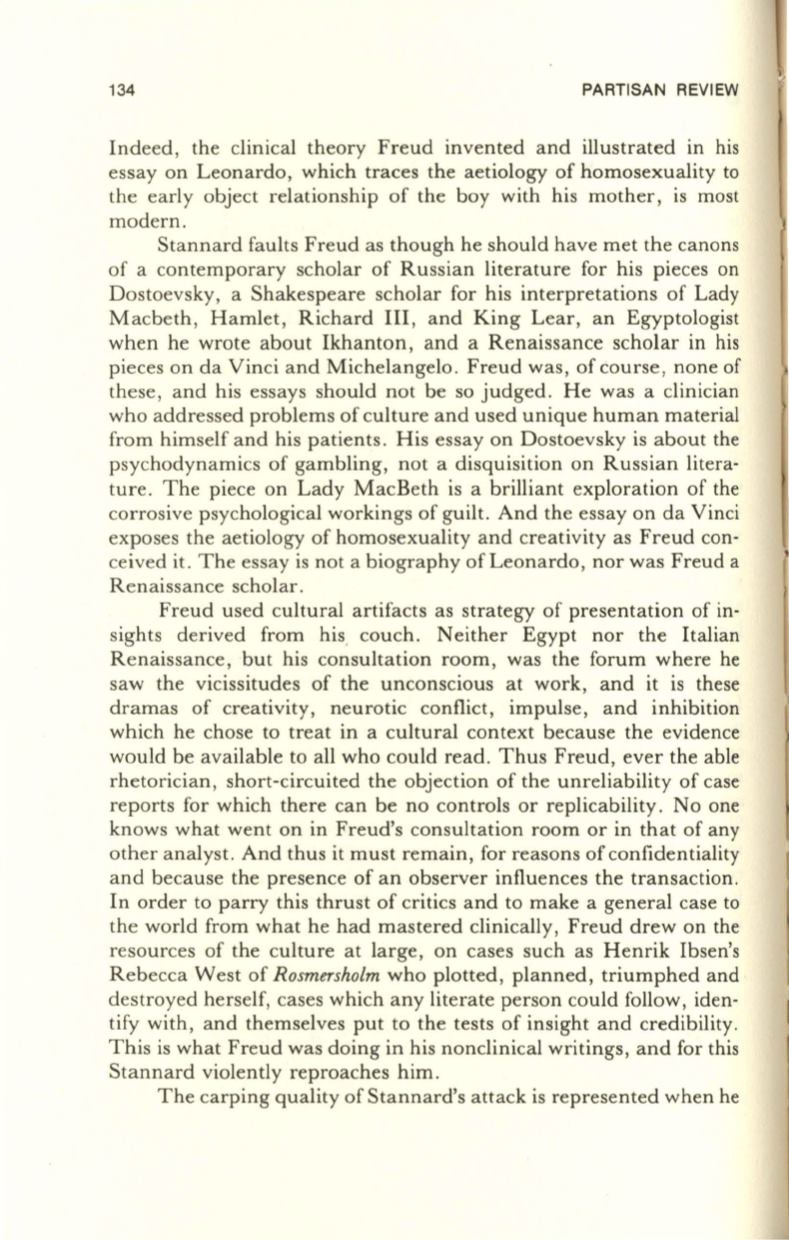
134
PARTISAN REVIEW
Indeed , the clinical theory Freud invented and illustrated in his
essay on Leonardo, which traces the aetiology of homosexuality to
the early object relationship of the boy with his mother , is most
modern.
Stannard faults Freud as though he should have met the canons
of a contemporary scholar of Russian literature for his pieces on
Dostoevsky, a Shakespeare scholar for his interpretations of Lady
Macbeth, Hamlet, Richard III, and King Lear, an Egyptologist
when he wrote about Ikhanton, and a Renaissance scholar in his
pieces on da Vinci and Michelangelo. Freud was, of course, none of
these, and his essays should not be so judged. He was a clinician
who addressed problems of culture and used unique human material
from himself and his patients . His essay on Dostoevsky is about the
psychodynamics of gambling, not a disquisition on Russian litera–
ture. The piece on Lady MacBeth is a brilliant exploration of the
corrosive psychological workings of guilt. And the essay on da Vinci
exposes the aetiology of homosexuality and creativity as Freud con–
ceived it. The essay is not a biography of Leonardo, nor was Freud a
Renaissance scholar.
Freud used cultural artifacts as strategy of presentation of in–
sights derived from his. couch. Neither Egypt nor the Italian
Renaissance, but his consultation room, was the forum where he
saw the vicissitudes of the unconscious at work, and it is these
dramas of creativity, neurotic conflict, impulse, and inhibition
which he chose to treat in a cultural context because the evidence
would be available to all who could read. Thus Freud, ever the able
rhetorician, short-circuited the objection of the unreliability of case
reports for which there can be no controls or replicability. No one
knows what went on in Freud's consultation room or in that of any
other analyst. And thus it must remain, for reasons of confidentiality
and because the presence of an observer influences the transaction.
In order to parry this thrust of critics and to make a general case to
the world from what he had mastered clinically, Freud drew on the
resources of the culture at large, on cases such as Henrik Ibsen's
Rebecca West of
Rosmcrsholm
who plotted, planned, triumphed and
destroyed herself, cases which any literate person could follow, iden–
tify with, and themselves put to the tests of insight and credibility.
This is what Freud was doing in his nonclinical writings, and for this
Stannard violently reproaches him.
The carping quality of Stannard's attack is represented when he


